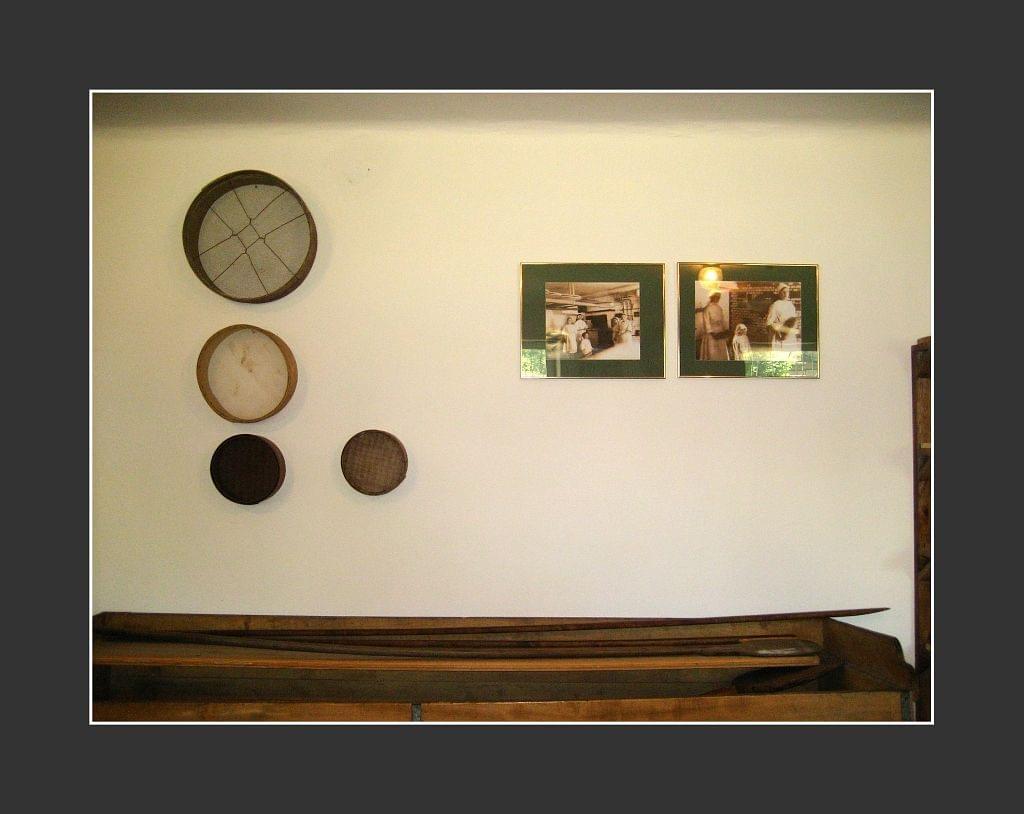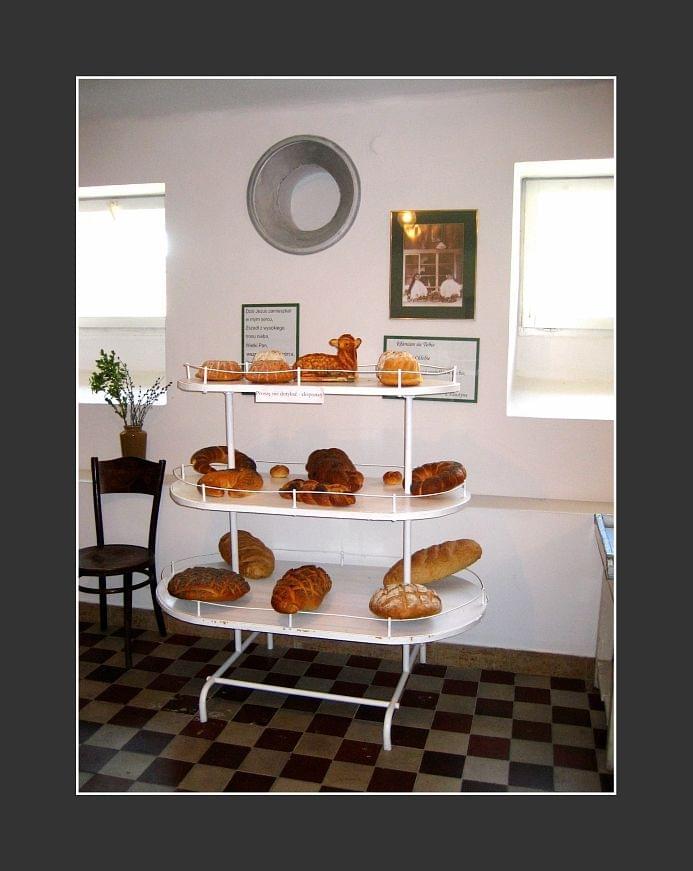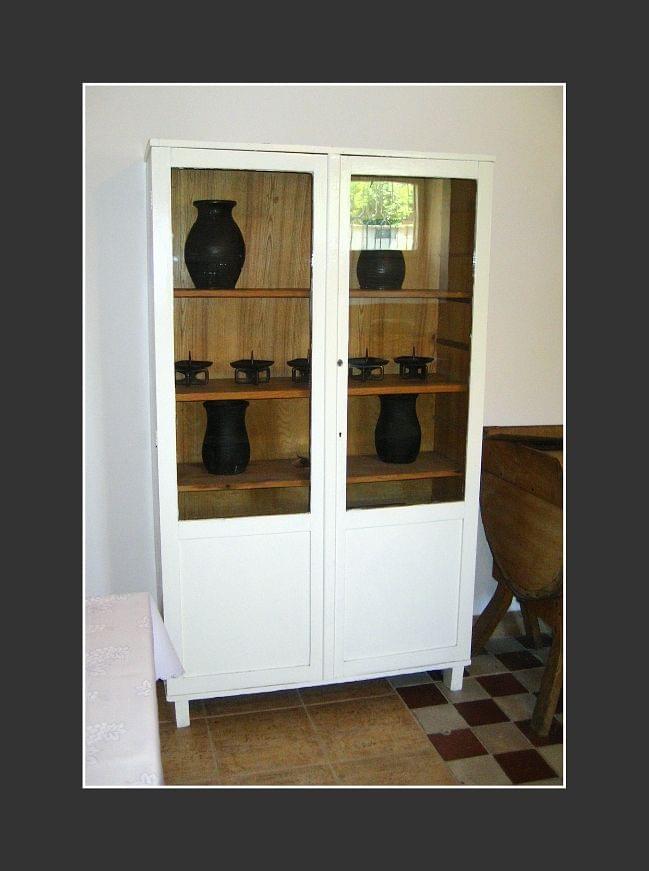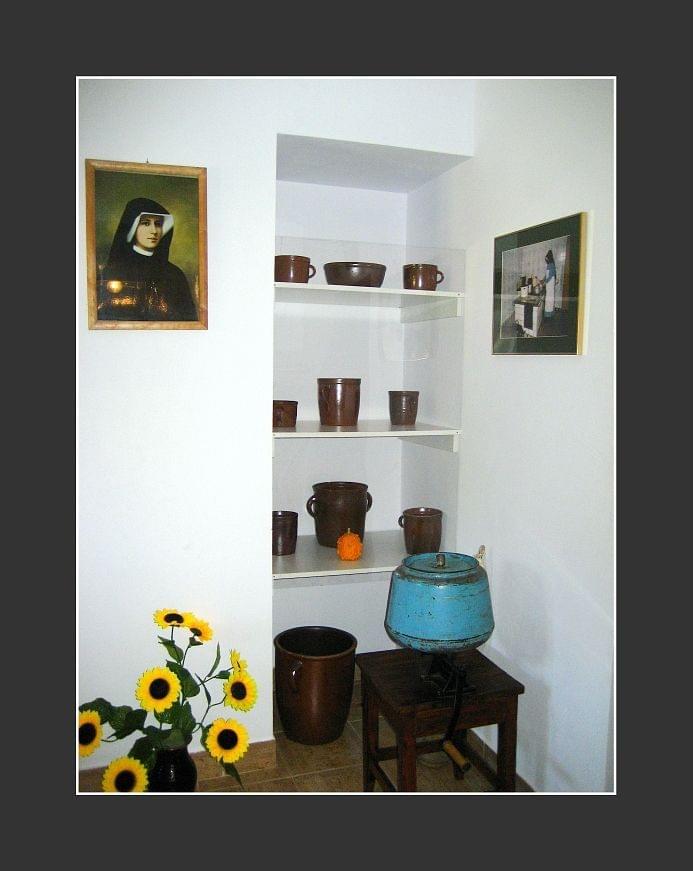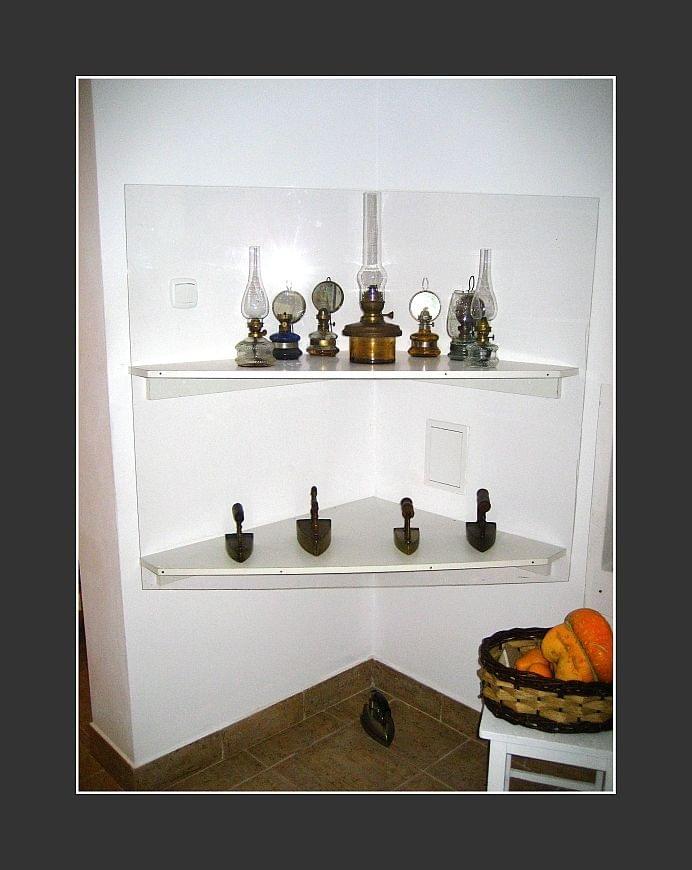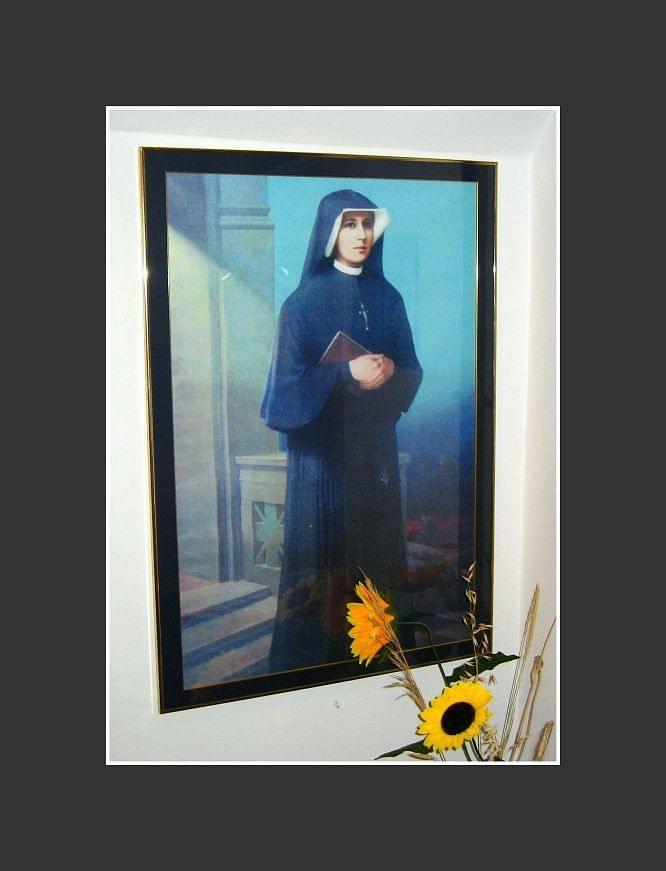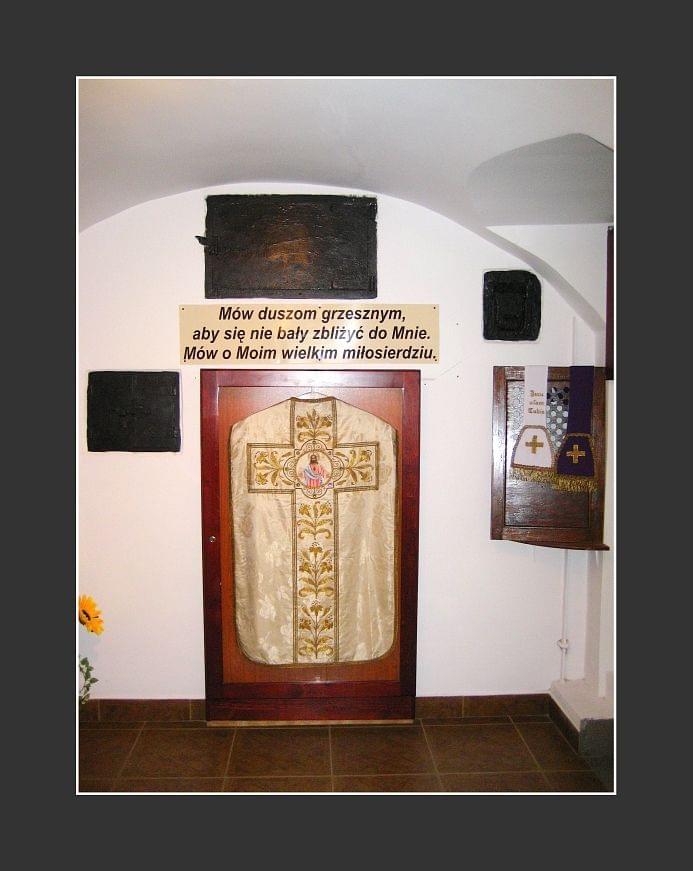Plock is the most important city and place in the World for the Divine Mercy.
On February 22, 1931, here in Plock, 26-year-old sister Faustina had her first and most important revelation of Merciful Jesus and His wish regarding establishing of The Feast of The Divine Mercy on the first Sunday after Easter.
"In my thoughts luminous trail on which Saint Faustina Kowalska prepared herself for the acceptance of the proclamation of mercy – the trail leading from Warsaw through Plock and Vilnius to Cracow" – these are the words of Pope John Paul II, who raised sister Faustina Kowalska from the Congregtion of the Sisters of Our Lady of Mercy to the altars on April 30, 2000. Approaching the Old Market Square in Plock it is possible to visit the Divine Mercy Shrine which is with purpose of numerous religious pilgrimages from entire World.
In the 100. anniversary of birthday of the sister in this a place stayed opened Museum of the Saint Sister Faustina Kowalska.
The will of Lord had been finally fulfilled, when the famous painting of the Merciful Jesus with the signature Jesus, I trust in You had been made, and the Polish Pope announced a new church feast – Divine Mercy Sunday on the first Sunday after Easter.
The Sanctuary of The Divine Mercy is placed in the house of the Congregation of the Sisters of Our Lady of Mercy in The Old Market Square, and inside it, a chapel with the painting of Merciful Jesus and the relics of St. Faustina.
In the square, the site of the apparitions, we can find a statue of the Merciful Jesus.
In the old bakery, in which Sister Faustina had worked during her stay in the convent of Plock (1930–1932), there is the St. Faustina Museum. It features numerous memorabilia and documents connected with the Polish saint and mystic. In the historic basements, there is a preserved bread oven, whereas in neighbouring rooms a kitchen and Sister Faustina’s cell had been recreated.
Original website - Official website of The Divine Mercy Shrine in Plock:
http://www.milosierdzie.plock.eu/
Geographic coordinates of Plock:
52 o 33 ' N
19 o 41 ' E
Plock is situated in Centre Europe in Central Poland.
Plock is situated on the biggest Polish river - the Vistula River.
On the map the red flag the marked the Divine Mercy Shrine in Plock.
Divine Mercy Shrine is situated in Old Market Square in Plock.
Adress the Divine Mercy Shrine in Plock:
Congregation of the Sistersof Our Lady of Mercy
The Sanctuary of Divine Mercy
09-404 Plock, Poland
Plac Stary Rynek 14/16 (Old Market Square 14/16)
 Tumskie Hill in Plock
Tumskie Hill in Plock
Plock is a city and a special space for entire World. Plock is large and long history and the important present time and the future. Plock is over millenary history and the tradition. This city very well is combining history and the modernity. Plock is a historical capital city of Poland and Masovia (Region of Poland) the oldest town in Center of Poland and Masovia as well as one of the oldest towns in Poland.
Plock is an at present quickly unrolling city, being in very Centre of Poland about 130 thousands counting this city of inhabitants nice is laid on the high bank of the wide Vistula River. Many treasured monuments are situated in Plock, among them a cathedral basilica is trying Romanesque and lock of the first dynasty of kings of Poland - the dynasty Piast. The cathedral basilica and the lock are on a Tumskie Hill which was an ancient castle reaching Roman times and the earlier settlement of the man.
Plock is a very important and strategic place for Europe and World on account of its location (Center Europe) civilization, culture, history and economy, economics and energetics (the modern and biggest refinery and the oil-fuel industry in this region of Europe). In this place they are meeting and all sorts civilizations and cultures are uniting with themselves. From the west European Union (Poland together with Plock is member EU) and America, from the East Russia, China, Japan and entire Asia. Plock is one of a few of the World centres CIFAL at the UN.
In history Plock also played paramount meaning..On 18-19 August 1920 armies of Bolshevik Russia invaded the to Poland and Plock. In spite of the great military majority of the opponent of Plock thanks to her heroic conduct took the population back not permitting Bolsheviks the victory to the passage through Vistula River. Otherwise Bolsheviks would force their way farther assuming the power in Europe, having the big support there then like for example in Germany. This victorious fight of Plock had the intense and deciding influence on protecting Europe and World from this threat.
On February 22, 1931, here in Plock, Saint Sister Faustina Kowalska had her first and most important revelation of Merciful Jesus (The Image "Jesus, I trast in You") and His wish regarding establishing of The Feast of The Divine Mercy on the first Sunday after Easter.
Official website of the Plock City Hall:
http://www.ump.pl/en/
Virtual walk in the Old City in Plock:
http://www.ump.pl/mapa/
Photogallery of the Plock:
http://www.plock24.pl/cpg/cpg/
Film - Panorama of the Plock
Photogallery and films about The Divine Mercy Shrine and the Saint Sister Faustina Museum in Plock
Undermentioned photographs and films are showing the Sanctuary and the Saint Sister Faustina Kowalska Museum
 THE PLACE OF THE FIRST AND MOST IMPORTANT REVELATION OF THE IMAGE OF MERCIFUL JESUS - THE IMAGE "JESUS, I TRUST IN YOU" IN THE DIVINE MERCY SHRINE IN PLOCK
THE PLACE OF THE FIRST AND MOST IMPORTANT REVELATION OF THE IMAGE OF MERCIFUL JESUS - THE IMAGE "JESUS, I TRUST IN YOU" IN THE DIVINE MERCY SHRINE IN PLOCK
The revelation of the Merciful Jesus took place in the cell of sister Faustina.
The cell of sister Faustina was situated at the first floor of the former monastery above the place where at present the statue of the Jesus is standing.
Exactly in this place on February 22, 1931 on Quadragesima, here in Plock, 26-year-old sister Faustina Kowalska had her first and most important revelation of Merciful Jesus and His wish regarding establishing of The Feast of Divine Mercy on the first Sunday after Easter and of devoting on that day the image of the Merciful Jesus with the signature: Jesus, I trust in You.
From diary of the Saint sister Faustina Kowalska:
“In the evening, when I was in my cell, I saw the Lord Jesus clothed in a white garment. One hand [was] raised in the gesture of blessing, the other was touching the garment at the breast. From beneath the garment, slightly drawn aside at the breast, there were emanating two large rays, one red, the other pale. In silence i kept my gaze fixed on the Lord; my soul was struck with awe, but also with great joy. After a while, Jesus said to me: Paint an image according to the pattern you see, with the signature: Jesus, I trust in You ! I desire that this image be venerated, first in your chapel, and (then) throughout the World"
(Diary 47).
"I want this image…to be solemnly blessed on the first Sunday after Easter; that Sunday is to be the feast of my Mercy"
(Diary 49).
”He promised to her, “By means of this Image I shall be granting many graces to souls”
(Diary 570).
The Polish Pope John Paul II on April 18, 1993 beatified in Vatican and next on April 30, 2000 also in Vatican has canonized the sister Faustina Kowalska.
Also on April 30, 2000 on first Sunday after Easter, the Pope John Paul II announced the new church holiday - Divine Mercy Sunday on the first Sunday after Easter and he devoted the image of the Merciful Jesus that is the image with the signature: Jesus, I trust in You.
The will of Lord had been finally fulfilled, when the famous painting of the Merciful Jesus with the signature Jesus, I trust in You had been made, and the Polish Pope John Paul II announced a new church feast – Divine Mercy Sunday on the first Sunday after Easter.
Film - THE PLACE OF THE FIRST AND MOST IMPORTANT REVELATION OF THE IMAGE OF MERCIFUL JESUS - THE IMAGE "JESUS, I TRUST IN YOU" IN THE DIVINE MERCY SHRINE IN PLOCK
 THE IMAGE OF MERCIFUL JESUS - THE IMAGE "JESUS, I TRUST IN YOU"
THE IMAGE OF MERCIFUL JESUS - THE IMAGE "JESUS, I TRUST IN YOU"
The Image "Jesus, I trust You" is most connected with The Divine Mercy Shrine in Plock.
Exactly here in Plock in the cell of the former monastery (above photograph and film) on February 22, 1931 in this form (above image) the Jesus showed himself for the Saint sister Faustina.
"I promise that the soul which will be commemorating this image won't die" - Jesus
The images of Merciful Jesus - "Jesus, I trust you", for the download are available on an undermentioned website -
Original website:
http://rayofmercy.org/index.html?middle=image_download.html
 Stone board in the place of revelation of the image of Merciful Jesus with the inscription: Plock on February 22, 1931 - "I Want this image to be commemorated in entire World" - In this monastery Sister Faustina from the Congregation of the Sisters of Our Lady of Mercy had the first vision of the image of the Mercy and here for the first time she heard the recommending the establishing a church holiday the Divine Mercy.
Stone board in the place of revelation of the image of Merciful Jesus with the inscription: Plock on February 22, 1931 - "I Want this image to be commemorated in entire World" - In this monastery Sister Faustina from the Congregation of the Sisters of Our Lady of Mercy had the first vision of the image of the Mercy and here for the first time she heard the recommending the establishing a church holiday the Divine Mercy.
 Saint Sister Mary Faustina Helena Kowalska (1905-1938)
Saint Sister Mary Faustina Helena Kowalska (1905-1938)
Sister Mary Faustina, an apostle of the Divine Mercy, belongs today to the group of the most popular and well-known saints of the Church. Through her the Lord Jesus communicates to the world the great message of God's mercy and reveals the pattern of Christian perfection based on trust in God and on the attitude of mercy toward one's neighbors.
She was born on August 25, 1905 in Glogowiec in Poland of a poor and religious family of peasants, the third of ten children. She was baptized with the name Helena in the parish Church of Swinice Warckie. From a very tender age she stood out because of her love of prayer, work, obedience, and also her sensitivity to the poor. At the age of nine she made her first Holy Communion living this moment very profoundly in her awareness of the presence of the Divine Guest within her soul. She attended school for three years. At the age of sixteen she left home and went to work as a housekeeper in Aleksandrow Lodzki, Lodz and Ostrowek in order to find the means of supporting herself and of helping her parents.
At the age of seven she had already felt the first stirrings of a religious vocation. After finishing school, she wanted to enter the convent but her parents would not give her permission. Called during a vision of the Suffering Christ, on August 1, 1925 she entered the Congregation of the Sisters of Our Lady of Mercy and took the name Sister Mary Faustina. She lived in the Congregation for thirteen years and lived in several religious houses. She spent time at Warsaw, Cracow, Plock and Vilnius, where she worked as a cook, gardener and porter.
Saint Sister Faustina died on October 5, 1938 in Cracow.
Saint Sister Faustina Kowalska longest was in Plock (1930-1932)
The years she had spent at the convent were filled with extraordinary gifts, such as: revelations, visions, hidden stigmata, participation in the Passion of the Lord, the gift of bilocation, the reading of human souls, the gift of prophecy, or the rare gift of mystical engagement and marriage. The living relationship with God, the Blessed Mother, the Angels, the Saints, the souls in Purgatory - with the entire supernatural world - was as equally real for her as was the world she perceived with her senses. In spite of being so richly endowed with extraordinary graces, Sr. Mary Faustina knew that they do not in fact constitute sanctity. In her Diary she wrote: "Neither graces, nor revelations, nor raptures, nor gifts granted to a soul make it perfect, but rather the intimate union of the soul with God. These gifts are merely ornaments of the soul, bat constitute neither its essence nor its perfection. My sanctity and perfection consist in the close union of my will with the will of God" (Diary 1107).
Original website:
http://www.milosierdzie.plock.eu/
The mission of Saint Faustina consisted of three tasks:
First, proclaiming and bringing the world closer to the truth of the merciful love of God for every human being, as revealed in the Scared Scriptures.
Second, imploring God’s mercy for the entire world, and particularly for sinners, through the practice of the new forms of devotion to The Divine Mercy asked for by the Lord Jesus.
Third, initiating the apostolic movement of Divine Mercy whose devotees and apostles shall bring about a religious renewal among the faithful in the spirit of this devotion, namely, acquiring an attitude of childlike trust in God and actively living the commandment of love and mercy toward one’s neighbor.
In obedience to her spiritual director, she wrote a diary of about 600 pages in which she gives account of the revelations she received on the Mercy of God.
The devotions and methods proposed are as follows:
1. Veneration of the Image of the Divine Mercy. The pattern for the image was revealed to St. Faustina on February 22, 1931 in the monastic cell in Plock.
From her Diary: “In the evening, when I was in my cell, I saw the Lord Jesus clothed in a white garment. One hand [was] raised in the gesture of blessing, the other was touching the garment at the breast. From beneath the garment, slightly drawn aside at the breast, there were emanating two large rays, one red, the other pale. In silence i kept my gaze fixed on the Lord; my soul was struck with awe, but also with great joy. After a while, Jesus said to me: "Paint an image according to the pattern you see, with the signature: Jesus, I trust in You ! I desire that this image be venerated, first in your chapel, and (then) throughout the World" (Diary 47).
"I want this image…to be solemnly blessed on the first Sunday after Easter; that Sunday is to be the feast of my Mercy" (Diary 49). He promised to her, “By means of this Image I shall be granting many graces to souls” (Diary 570).
2. The Chaplet of Divine Mercy. This prayer is a powerful took of intercession in order to atone for sin and appease the justice of God. God promises that those who say this with faith, confidence and trust in His Mercy will obtain their requests, especially those requests related to the graces of conversion and peaceful deaths. About the chaplet, the Lord told St. Faustina, “When this chaplet is said by the bedside of a dying person, God’s anger is placated, unfathomable mercy envelops the soul” (Diary 811)…”It pleases me to grant everything they ask of Me by saying the chaplet” (Diary 1541)…”If what you ask is compatible with my will” (Diary 1731).
3. The Great Hour of Mercy. The Hour of Mercy is 3pm. This is the hour that Jesus died on the Cross, and it is the moment in which “Mercy triumphed over justice” (Diary 1572). Jesus asked St. Faustina, at this hour, to immerse herself in His mercy asking it to cover the whole world, especially sinners. Jesus promises, “In this hour you can obtain everything for yourself and for others for the asking” (Diary 1572). Prayers at this hour should be addressed to Jesus, they should appeal to His mercy and the merits of His passion, and they should be made at 3pm in the afternoon.
4. The Feast of the Divine Mercy. This devotion ranks the highest in the all the forms of devotion to the Divine Mercy. Jesus asked Sr. Faustina to have this Feast of Divine Mercy instituted on the first Sunday after Easter Sunday. This Sunday is to be a time of great graces for all, especially sinners. The Lord promises, “…whoever approaches the Fount of Life on this day will be granted complete remission of sins and punishment” (Diary 300). As well, “On this day the very depths of My tender mercy are open. I pour out a whole ocean of graces upon those souls who approach the fount of My mercy…Let no soul fear to draw near to Me, even though its sins be as scarlet” (Diary 699). To reap the benefits of these great graces, one must have trust in God’s mercy, be in the state of sanctifying grace (gone to Confession), and receive Holy Communion.
5. The propagation of the devotion to the Divine Mercy. To those that spread the honor of the Divine Mercy, Jesus promises to “shield through their entire life as a tender mother her infant, and at the hour of death I will not be a Judge for them, but the Merciful Savior” (Diary 1075). Spreading the honor of this to others does not necessarily mean many words (though it does require speaking about it). It primarily means living it. This means living in a spirit of faith and trust in God, and being merciful and kind in your actions and attitudes toward others.
Original website:
http://www.piercedhearts.org/theology_heart/life_saints/faustina_kowalska_life_of.htm
Prayer - The Divine Mercy Chaplet:
http://www.saint-faustina.com/Chaplet.php



















